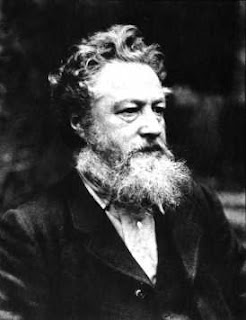HCA Spring Conference 2011
Saturday 19 March 2011, 10am to 4.30pm
Sackler Centre, Victoria and Albert Museum, Cromwell Road, London
This is the first day conference organised specifically for those working in heritage crafts and others who are interested and/or concerned about their future. A number of heritage crafts may be in danger of decline, but this is a day to celebrate the ways in which craft workers contribute to the rich tapestry of British heritage, and are a significant part of tourism and the economy.
After a short guest speech, Professor Tanya Harrod, well-known authority on crafts, journalist and author of The Crafts in Britain in the 20th Century, will talk on Craft Matters. This will be followed by a presentation of life and crafts on the Victorian and Edwardian Farm by Alex Langlands, one of the three people involved in living the life on the BBC programmes The Victorian Farm and The Edwardian Farm. We have scheduled a long lunch hour which is a chance for you to bring in a piece of your craft for an Instant Gallery. You can either put a notice about how it was made beside it, or stay with your artefact and explain to others at the Conference how it was made, and the tools and materials you used to make it.
Then in the afternoon we have three short presentations from craftspeople, telling us their approach and how they run their businesses, and we finish with positive heritage craft news.
A sandwich (one and a half rounds) lunch, and tea or coffee will be available in the Sackler Centre (please note, lunch needs to be pre-ordered and paid for and tickets for this will be issued).
Programme for the day:
- 10·00am - Arrival, register and coffee/tea available
- 10·30am - Welcome, Patricia Lovett, Vice-Chair of HCA
- 10·40am - A brief history of the Heritage Crafts Association, Robin Wood, Chair of HCA
- 10·50am - Guest speaker (to be announced)
- 11·10am - Keynote speech ‘Craft Matters’, Professor Tanya Harrod
- 12·00pm - Break
- 12.15pm - ‘Life and craft on a Victorian and Edwardian Farm’, Alex Langlands
- 1·00pm - Lunch available (please pre-order)
Instant Gallery of Craft
- 2·30pm - Sophie Hussain – stained glass
- 2·50pm - Stewart Linford – chair maker
- 3·20pm - Break
- 3·35pm - Gail McGarva – boat builder
- 4·00pm - Good news! Recent successes of the Heritage Crafts Association
- 4.30pm - Conference ends
Cost:
To book:
Please send your completed form, along with a cheque for the whole amount made payable to 'Heritage Crafts Association', to:
Patricia Lovett
HCA Spring Conference
Hernewood
Gracious Lane
Sevenoaks
Kent TN13 1TJ
Please also enclose a stamped self-addressed envelope for the ticket(s).
You can also send your payment by PayPal to info@heritagecrafts.org.uk.
Please include a note with your payment headed 'Spring Conference 2011' and mark on your booking form 'paid via PayPal'.
























